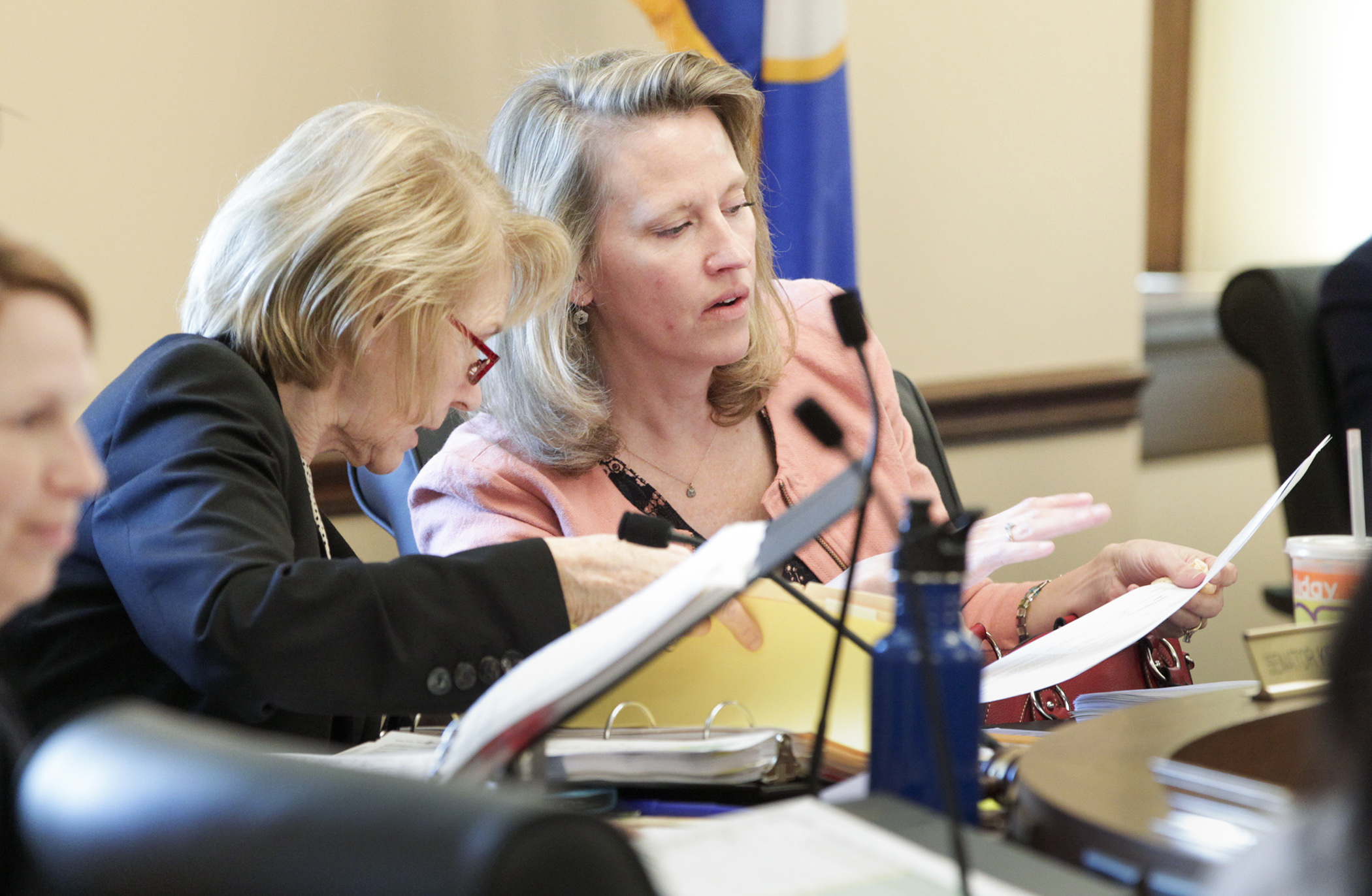$61 million and plenty of policy separates House, Senate state government bills

A committee of 10 legislators – five from the House, five from the Senate – began working Friday toward reconciling a $61.29 million difference in how to fund state government agencies over the next two years and the policies that dictate their operations.
The conference committee is wading through different versions of HF691/SF605*, the omnibus state government finance bill, which the House passed on April 7 and the Senate March 29. The House version, sponsored by Rep. Sarah Anderson (R-Plymouth), proposes a $943.3 million budget for state agencies and the Legislature, while the version touted by Sen. Mary Kiffmeyer (R-Big Lake) runs just over $1 billion.
Both products are significantly less than the $1.17 billion plan drawn up by Gov. Mark Dayton.
When the House bill was unveiled in committee, Anderson emphasized prioritizing government spending, reducing the size of government and removing what she saw as excess – from so-called “golden parachutes” to an employee incentive program. Dayton appointees offered warnings and harsh words about the bill that divided the committee along party lines.
Notable financial differences
The biggest difference in the two spending plans is a House provision that would remove the state’s annual $16 million contribution to the City of Minneapolis employees’ retirement fund, requiring the city to shoulder the cost. The Senate reduces the amount by $10 million per year to a $6 million annual contribution.
While both versions make reductions to Minnesota Management and Budget and the Department of Revenue – the House reduces the agencies’ operating budgets by a combined $23 million – there’s a bigger discrepancy between funding MMB. The Senate calls for a two-year $3.55 million reduction while the House draws up a $10.76 million reduction – a difference of $7.2 million.
Last year the Legislature allocated $10 million to the James Metzen Mighty Ducks Grant Program for ice arenas to upgrade their refrigeration equipment. Spent so far is $2.8 million, so the Senate wants to continue allocating the remaining $7.16 million while the House doesn’t.
Some other financial differences include:
- Legislative budget: The House version cancels $8.6 million in carryforward money, the Senate doesn’t;
- Department of Human Rights: A $2.06 million gap between the Senate, which wants to allocate an additional $85,000 above base, and the House, which calls for a $1.98 million operating budget reduction;
- Minnesota Historical Society: A $3.76 million discrepancy between the Senate, which calls for a 5 percent operating budget reduction and canceling the Global Minnesota Grant; the House wants to spend an additional $1.5 million on digital preservation; and
- Minnesota Humanities Center: The Senate’s 5 percent budget reduction and eliminating the Healthy Eating Here at Home Grant plus the House’s increased spending on the Veterans Defense Project and an additional 50,000 in spending creates a $1.2 million gap.
Policy differences
As Kiffmeyer noted before the committee adjourned, “We have quite a lot of subject work under our purview.”
The competing bills don’t only outline spending. By adding policy differences in the omnibus bills, the committee will have to comb through changes in state programs and services.
While the House implemented a provision that would maintain 95 percent agency funding in the event of a government shutdown, the Senate limited the “lights on” funding to the Minnesota Racing Commission. Rep. Bob Loonan (R-Shakopee) introduced a similar bill in the House that was amended to its current form.
The House bill would also establish a Legislative Budget Office – an $800,000 per year expense – to handle fiscal notes, instead of MMB. The Senate would establish an advisory task force on fiscal notes.
Both chambers want to require additional oversight of MN.IT, the state’s centralized IT service agency, but the House would require MN.IT to finish its consolidation work and include more departments in its system.
Both chambers want to eliminate the campaign finance public subsidy program.
Some other policy differences:
- the House makes a major overhaul of agency rulemaking processes and abilities; the Senate isn’t as extensive;
- the House includes an overhaul of the Minnesota Sports Facility Authority, a bill that made its way through the House and through the Senate committee process, but hasn’t been voted on in the Senate Chamber yet; and
- the House has a provision requiring new reporting standards for political committees who sell goods like doughnuts.
Related Articles
Search Session Daily
Advanced Search OptionsPriority Dailies
Ways and Means Committee OKs proposed $512 million supplemental budget on party-line vote
By Mike Cook Meeting more needs or fiscal irresponsibility is one way to sum up the differences among the two parties on a supplemental spending package a year after a $72 billion state budg...
Meeting more needs or fiscal irresponsibility is one way to sum up the differences among the two parties on a supplemental spending package a year after a $72 billion state budg...
Minnesota’s projected budget surplus balloons to $3.7 billion, but fiscal pressure still looms
By Rob Hubbard Just as Minnesota has experienced a warmer winter than usual, so has the state’s budget outlook warmed over the past few months.
On Thursday, Minnesota Management and Budget...
Just as Minnesota has experienced a warmer winter than usual, so has the state’s budget outlook warmed over the past few months.
On Thursday, Minnesota Management and Budget...